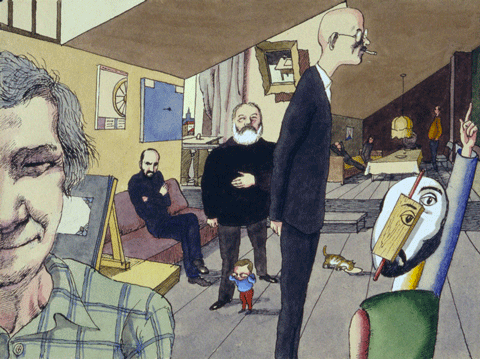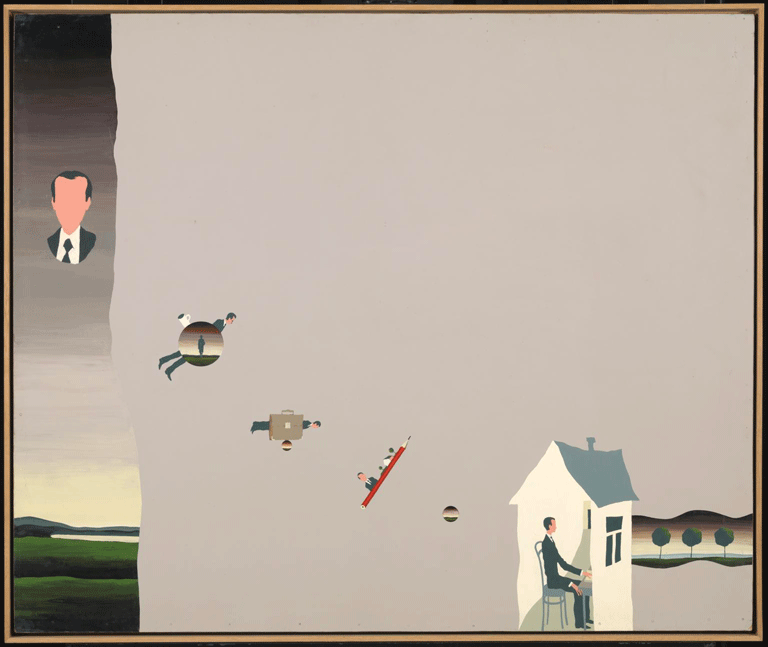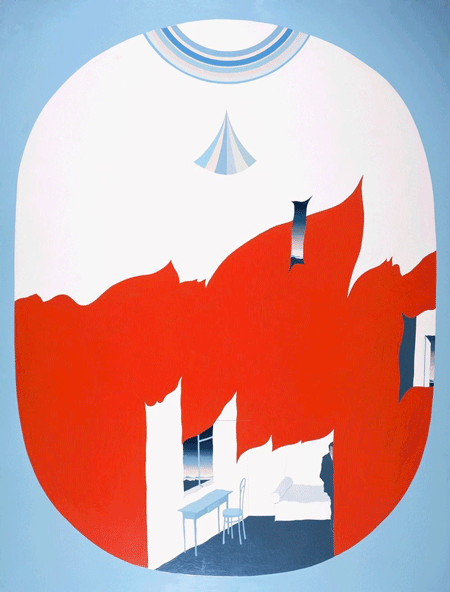“Creativity is often strongest when under threat,” Zachary Small muses in his piece on underground art in Soviet Russia. In the former USSR, art – like so many aspects of life – had to adhere to the ideological framework mandated by the centralized government. It was within these narrow confines that Viktor Pivovarov and his contemporaries created their art – risking social and economic security to practice freedom of expression.
The totalitarian government of the Soviet Union sought to quash the individual liberties and human rights of its people for nearly seventy years. For Pivovarov, art served as a tool of activism that could be wielded to fight for the values behind the United Nations Sustainable Development Goal on Peace, Justice and Strong Institutions (SDG 16). Small continues, “[The Conceptualist’s] aims were not necessarily to democratize Russia, but to democratize artistic production outside of the hierarchical system installed by Khrushchev – and to ask, how do we live in our existing social conditions? How does art evolve under and outside of Soviet doctrine?”
Their work also demanded that Soviet approaches to work and life be reconsidered. The SDG on Decent Work and Economic Growth is all about the creation of jobs and the improvement of living standards. Tatiana Istomina writes: “[Their] clandestine, apparently meaningless actions subverted the official Soviet ideology of pragmatic labor and universal liability, allowing the artists freedom to work and create.”

Pivovarov, along with Ilya Kabakov, Erik Bulatov, Oleg Vassiliev and others, began as The Sretensky Boulevard Group, a group of avant-garde artists that flouted restrictive artistic mandates and nurtured a thriving group of creative minds.
Pivovarov reflected: “In the history of culture, every so often there are periods of explosions, revolutions, years of unusual productivity and an unbelievable concentration of creative energy that artists can latch onto. And in Moscow, this occurred between the years of 1972-1976.”
From The Sretensky Boulevard Group came the movement known as Moscow Conceptualism, which valued ideas over form and harkened back to the conceptualism that had emerged in Western Europe nearly twenty years earlier. Pivovarov’s work provided social commentary on the reality of life in Soviet Russia, but his critique was steeped within love and nostalgia for Moscow, the city of his birth in 1937.
Tate Galleries notes that similar to the works of Ilya Kabakov, Pivovarov’s paintings from this era depicted a “world of communal apartments, tedious work and the frequent interference of the state-governed public sphere into the private world of the individual.” His work offered an introspective look at life in Soviet Russia and explored individual subjectivity, while living in a world that promoted the virtues of communism.

In the 1930s, the government dictated that all artistic groups would be replaced with artist unions, ushering in the era of Soviet art and limiting the freedom of individuals to gather and create as they wished. Socialist Realism, the aesthetic of a highly idealized USSR, was the official style from 1932-1988, yet artists continued to push beyond the rigid boundaries imposed on them in order to explore their non-conformist art.
Emily Ziffer writes about Russian conceptual art: “At its core, it was anti-Soviet: it strove to deconstruct the language of the Soviet authorities through irony and absurdity.”
Like many artists of his time, Pivovarov was schooled in what the government deemed an acceptable art form at the Kalinin Industrial Art School in Moscow. Later, he would become a prolific children’s book illustrator, with over fifty credits to his name. As he transitioned to the underground art scene of the 1970s, he boldly embodied the ideal that human beings should be allowed to choose work that is decent, sustainable and protected.
In contrast to the Socialist Realist approach that eschewed ambiguity and demanded closure, Pivovarov’s art explored individuality and loneliness – the ambiguous, liminal spaces that exist beyond totalitarian certainty. Pivovorov’s work and legacy remind us that even in the shadow of totalitarianism, expression, creativity and art continuously find a way into the light.
Since moving to Prague in 1982, Pivovarov has published a memoir called The Agent in Love and continues to produce art. His work is on display at the National Gallery Prague until November 21, 2021.

